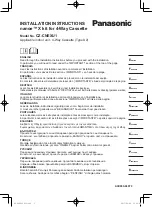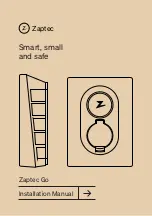
12
Fan System — Capacity Control
There are several methods for capacity control of the evaporative cooling unit. Methods include: Fan motor cycling,
the use of two speed motors and the use of variable frequency drives (VFD’s).
In all cases, if motors are idle for extended periods of time with water still being directed over the heat transfer media,
motor space heaters are suggested.
Fan Motor Cycling
Fan Motor Cycling requires the use of a single stage thermostat which senses the water temperature. The contacts of
the thermostat are wired in series with the fan motor’s starter holding coil.
Fan Motor Cycling is often found to be inadequate where the load has a wide fluctuation. In this method, there are
only two stable levels of performance: 100% of capacity when the fan is on and approximately 10% of capacity when
the fan is off. Please note, rapid cycling of the fan motors can cause the fan motor to overheat.
Controls should be
set to only allow a maximum of six (6) start/stop cycles per hour.
IMPORTANT
THE RECIRCULATION PUMP SHOULD NOT BE USED AS A MEANS OF CAPACITY CONTROL AND SHOULD
NOT BE CYCLED FREQUENTLY. EXCESSIVE CYCLING CAN LEAD TO SCALE BUILD-UP AND REDUCES THE
PERFORMANCE. FREQUENT CYCLING OF THE SPRAY PUMP, WITHOUT THE FANS IN OPERATION, WILL
PROVOKE DRIFT AND SPRAY WATER MIGRATION OVER THE AIR INLET LOUVERS, WHICH IS PROHIBITED
IN MOST COUNTRIES. PLEASE CONSULT YOUR LOCAL LEGISLATION.
Two Speed Motors
The use of a two speed motor provides an additional step of capacity control when used with the fan cycling method.
The low speed of the motor will provide 60% of full speed capacity.
Two speed capacity control systems require not only a two speed motor, but a two stage thermostat and the
proper two speed motor starter. The most common two speed motor is a single winding type. This is also known
as a consequent pole design. Two speed two winding motors are also available. All multi-speed motors used in
evaporative cooling units should be variable torque design.
It is important to note that when two speed motors are to be used, the motor starter controls must be equipped with
a decelerating time delay relay. The time delay should be a minimum of a 30 second delay when switching from high
speed to low speed.
Sequence of Operation for Two Fan Units with Two Speed Motors During Peak Load
1. Both fan motors on full speed – full water flow over both cells
2. One fan motor on high speed, one fan motor on low speed – full water flow over both cells
3. Both fan motors on low speed – full flow over both cells
4. One fan motor on low speed, one fan motor off – full water flow over both cells
5. Both fan motors off – full water flow over both cells
6. Both fan motors off – full single cell flow through one cell
Variable Frequency Drives
The use of a variable frequency drive (VFD) provides the most precise method of capacity control. A VFD is a device
that converts a fixed AC voltage and frequency and changes it into an AC adjustable voltage and frequency used
to control the speed of an AC motor. By adjusting the voltage and frequency, the AC induction motor can operate at
many different speeds.
The use of VFD technology can also benefit the life of the mechanical components with fewer and smoother motor
starts and built in motor diagnostics. VFD technology has particular benefit on evaporative cooling units operating
in cold climates where airflow can be modulated to minimize icing and reversed at low speed for de-icing cycles.
Applications using a VFD for capacity control must also use an inverter duty motor built in compliance with IEC. This is
an available option from EVAPCO. The standard fan motors supplied by EVAPCO are not intended for use with VFD’s.
The type of motor, manufacturer of the VFD, motor lead lengths (between the motor and the VFD), conduit runs and
grounding can dramatically affect the response and life of the motor. The motor lead length restrictions vary with the
motor vendor. Regardless of motor supplier, minimizing motor lead length between the motor and the drive is good
practice.
Sequence of Operation for Multi-fan Units with a VFD During Peak Load
1. The VFDs should all be synchronized to speed up and slow down uniformly.
2. The VFDs need to have a pre-set shutoff to prevent water temperatures from becoming too cold and to
prevent the drive from trying to turn the fan at near zero speed.
3. Operating below 25% of motor speed achieves very little return in fan energy savings and capacity
control. Check with your VFD supplier if operating below 25% is possible.
Содержание AT 110-112
Страница 39: ...39 ...
Страница 40: ... 2012 EVAPCO Europe Bulletin 113 E 1216 ...













































